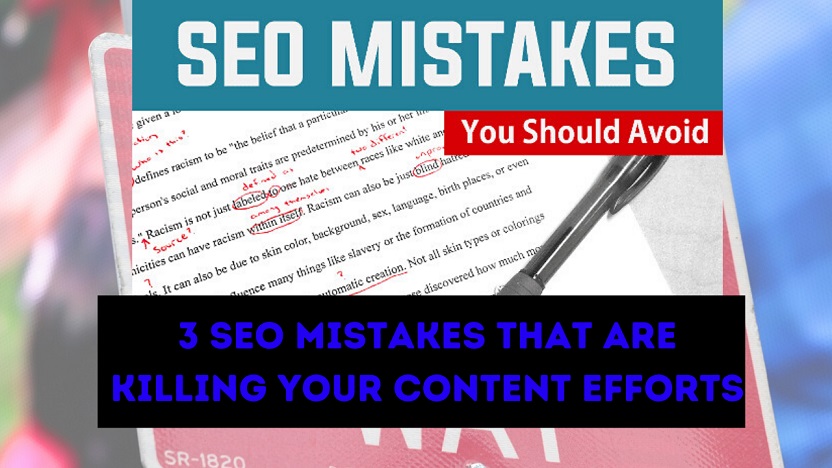3 SEO Mistakes That Are Killing Your Content Efforts

Even veteran content marketers make mistakes now and then. In the world of SEO where content plays a tremendous role and where there are constant algorithm updates and search patterns, making a mistake is almost unavoidable.
That said, the same mistakes can often result in realizations that bring out even better content performance. The takeaway here is the ability to spot the easy-to-fix SEO mistakes and fix them right as soon as you’ve discovered the.
Doing so will ensure that your content is optimized well so searchers can easily find them and satisfy their search goals.
So, what are these SEO mistakes that brands keep on falling for? How can they be resolved? Below are three top SEO mistakes and a solution to each problem.
- Selecting target keywords according to volume vs relevance
Great content becomes useless if people don’t see it. But when marketers focus too much on high-volume keywords, that’s when they miss out on valuable engagement.
Admittedly, it’s quite tempting to go to your preferred keyword search tool and pick only keywords that have the most search volume for your new content.
If the content you’re crafting doesn’t align with the search intent for that high-volume keyword, then chances are, it won’t live up to your expectations.
Solution: There’s a way out of this. Assessing the first ten search results for your target keywords can aid you in understanding what users want to find, and what supporting content you should offer to be considered as the best answer for that query.
Also, while you’re evaluating those top results, make sure to take note of the key factors that will influence your content creation and promotion strategy.
- Targeting similar keywords on several posts or pages
The line that says, “more is better,” doesn’t always apply to everything, especially when it comes to SEO content. Creating several pieces of content that use the same target keywords is a definite way to block your success.
Plus, there’s already enough competition for B2B marketers, so there’s certainly no need to compete with your own content. For instance, a B2B technology business that intends to rank for B2B software consulting should focus on optimizing its page for the term according to what is being used in search results.
However, if they also provide a series of articles or resources that target the same term, then search engines will naturally be confused on which page offers the best answer. As a result, neither of your content will appear in the top 10 results, but rather, your competing sites may rank better instead since they have a clearer answer to that query.
Solution: Identity which among your web pages or posts has the best answer for that certain query by examining ranking and analytics data. Which of them has the most volume of engaged traffic for your target keyword? Which is the one that matches the most with the search intent?
After you’ve singled out your target page, assess the remaining content that targets that keyword. Take note of opportunities that need removing outdated content, optimizing current content for related yet different target keywords, and combining closely related content.

- Ignoring the internal link structure
The links are what lead people to content. A website’s internal linking structure helps bots and users identify which of your pages are most important, and which pages are most relevant to certain keywords. For example, if several of your pages are linked from the same anchor text, this will create confusion as to which page is the one that talks about that topic.
Other times, your pages or posts on your website could get orphaned, without internal links guiding users or bots to your content. As a result, it can confuse search engine bots, site visitors, and worse, even your team. One thing’s for sure, confusion won’t get you anywhere.
Solution: Make sure to create a site’s keyword map and continue to update it. It may seem as simple as a mere list of your page’s URL and their associated target keywords, but it has an important role.
Your keyword map helps you identify what anchor text you should use to link to your target pages. From there, perform a site audit to know if there are pages that need internal links if there are other ways to create more supporting content, and other opportunities to decrease and prune current supporting content.
Then, you’ll need to crawl your site to see if there are orphaned pages. Finally, map those pages into your keyword strategy and employ internal links.
For more tips and articles visit Bobs SEO a Las Vegas SEO company and digital marketing consultant.
Rate This Post

